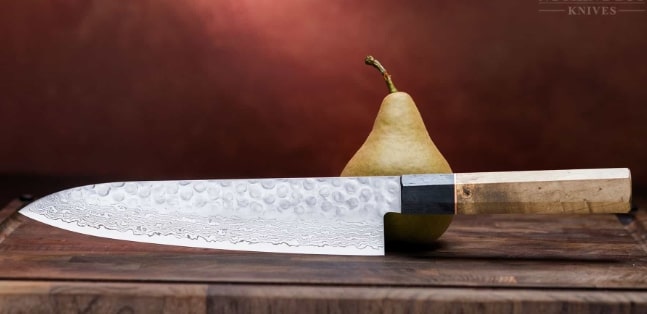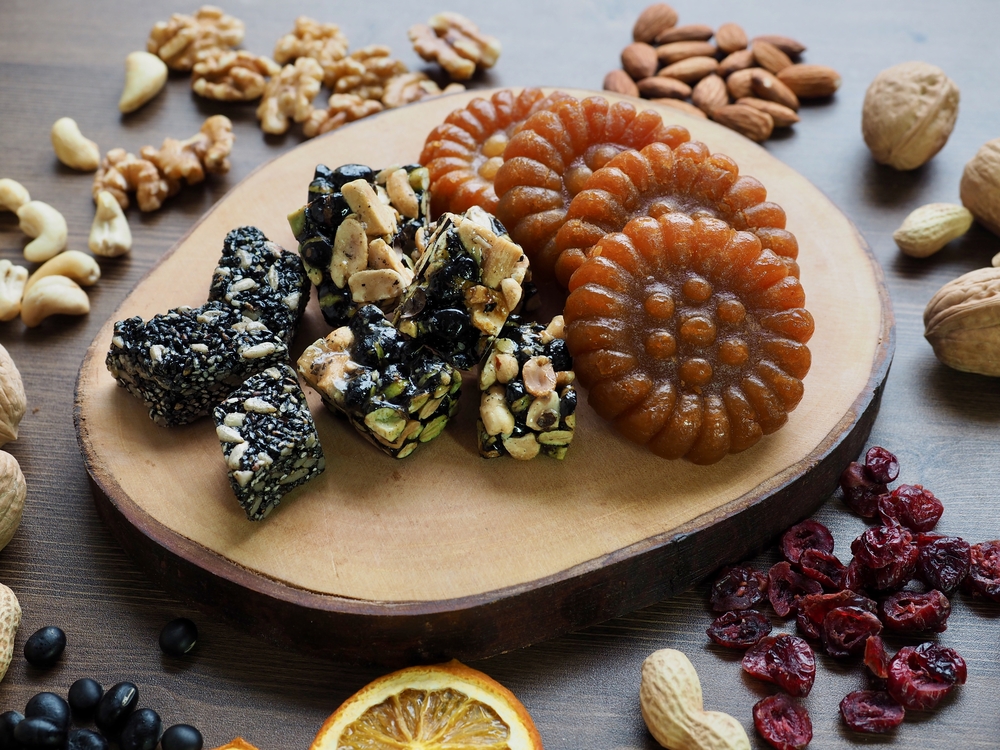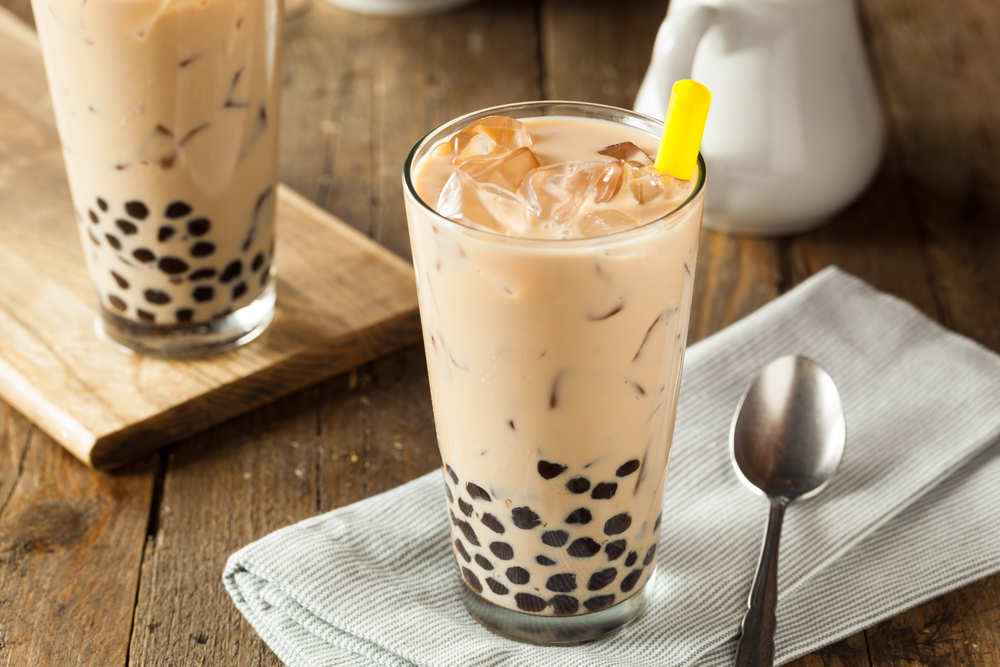We all love snack food, whether it be healthy or not. And we grow up with an appreciation for our own country’s snack foods, but discovering how other cultures do their snacking is always intriguing and exciting.
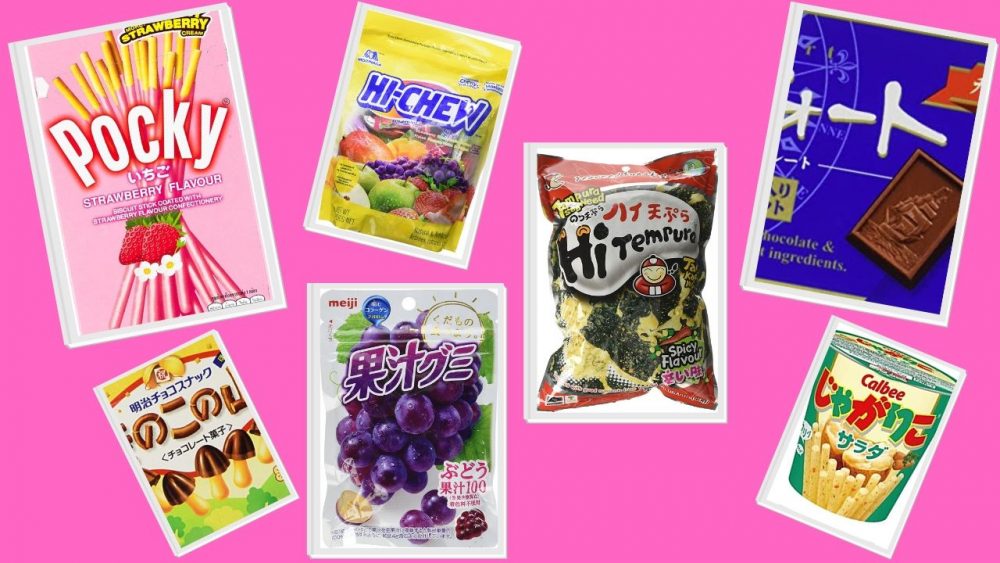
Japan is a nation of healthy food that blurs the line between cuisine and art, but it is also a country of fantastic snack foods.
Japanese snacks are sometimes clever reinventions of traditional foods; other times, they’re influenced by the snack foods of Europe and beyond.
If you also want to learn more about the best Japanese drinks (both alcoholic and soft drinks) you can read all about Japanese drinks here.
Must-Try Japanese Snacks
Having consistently survived off convenience store food in Tokyo, and always tracking down our favourite Japanese snacks when visiting Korea, Taiwan, and China, we are well verse in our Japanese snacks.
And so, here is a list of some of the best, most delicious, and most varied Japanese snacks from around the country, as well as (at the bottom) where to buy Japanese snacks online and offline. Itadakimasu!
Pocky
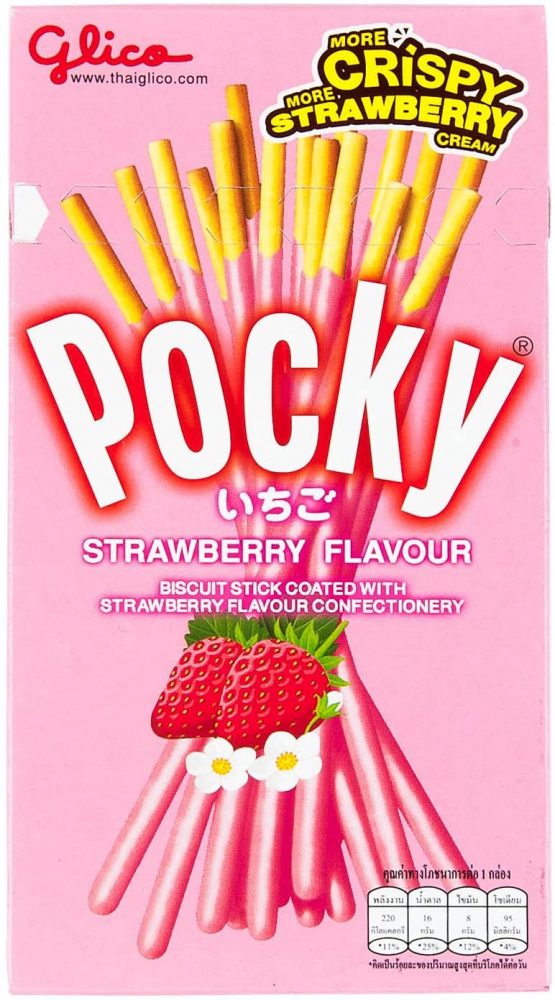
There aren’t any Japanese snacks more famous than Pocky. They’re referenced in anime and video games; they’re beloved by Japan’s youth; they’ve even inspired a Korean version which is thicker and more heavily chocolate-coated: Pepero.
Pocky are long, thin sticks of biscuit, lightly coated in chocolate or any one of a hundred other flavours.
Pocky flavours include: banana, cookies and cream, matcha, strawberry, coconut, mango, and more. Many are limited edition, tied in with a festival or cultural moment.
The best thing about Pocky is how much they do with so little. They come in a small box that provides a perfect afternoon sweet snack for two (or one, if you’re me).
They work as sharing food; they’re a sweet snack, but they’re not heavy and guilty. They are also, most importantly, so very delicious.
The minimalism is bolstered by the perfect taste, regardless of the Pocky flavour you choose.
Matcha KitKats
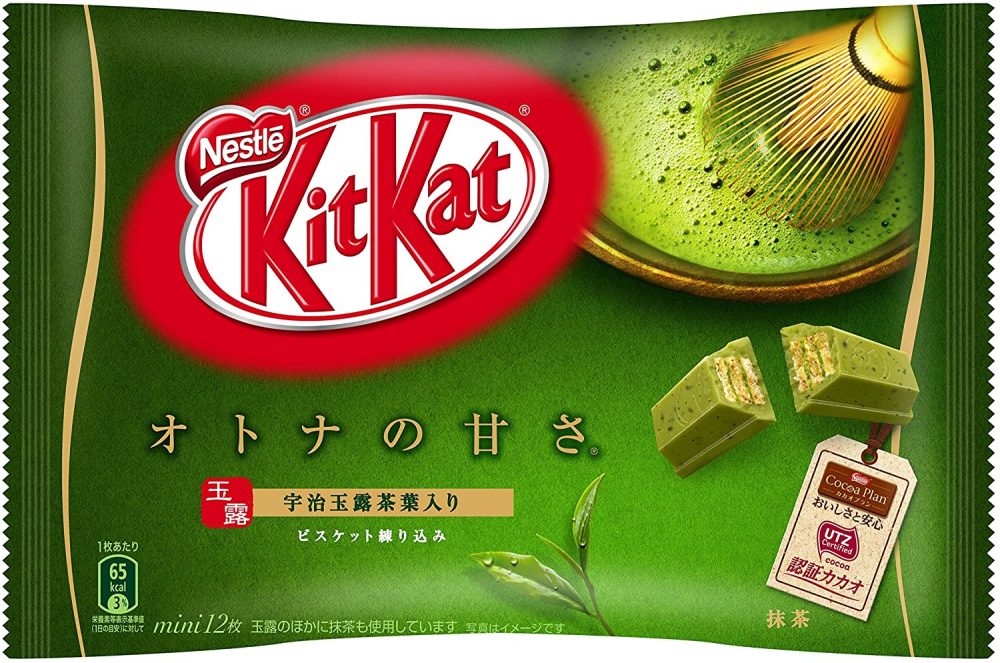
KitKats, a simple chocolate-covered wafer sold by Nestle (an enormous Swiss food and drinks conglomerate), are an obsession in Japan.
While most countries sell KitKats in a few different forms (peanut butter, chunky, etc), Japanese KitKats are almost as much a symbol as they are a food snack.
In Japan, KitKats come in dozens of different flavours, most of which are available all year round, but some are only around for a limited time.
This feeds off the Japanese romanticism of transience: the beauty in things that exist for a time and then fade, like cherry blossoms. Many KitKats are only around during festivals or specific seasons.
The most famous of Japanese exclusive KitKats is the matcha flavoured KitKat. This is because matcha is a flavour associated strongly with Japan, and matcha is a key aspect of Japanese food culture.
Eating a matcha KitKat when you visit Japan is, like, the law.
Read More: The Best Korean Ramen
Melon Pan
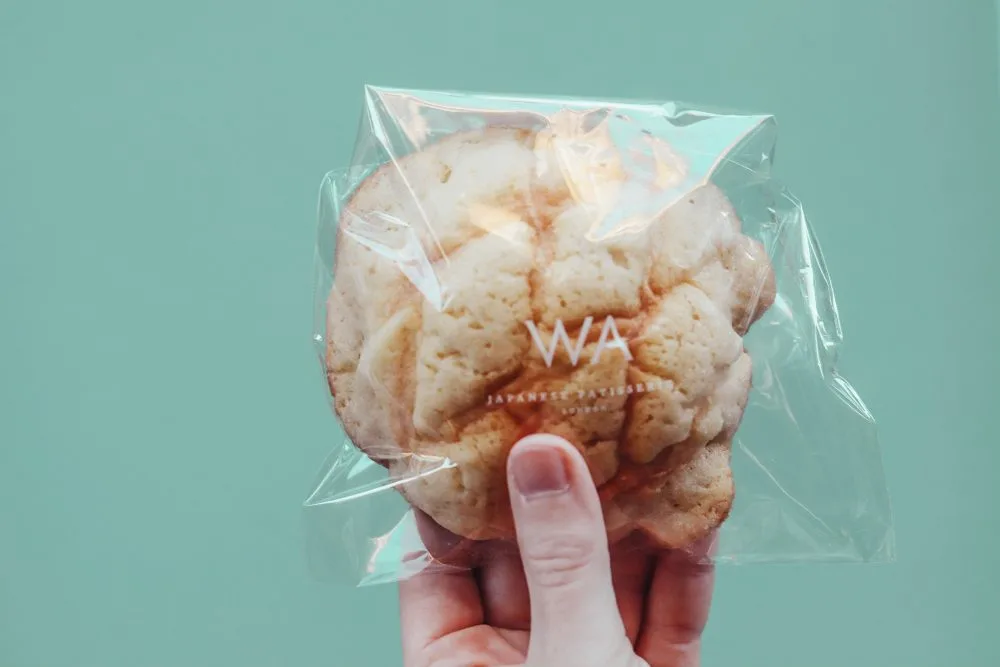
The first time you walk into a Japanese convenience store, you’ll find a shelf or two lined with individually packaged lumps of yellow bread. These are melon pan: ¥100, sweet, lightly sugar-coated lumps of yellow bread.
When I worked a 9-5 job in Tokyo, a visit to the convenience store at 8am to grab a melon pan for my breakfast walk to the metro station was a daily ritual.
Melon pan come in a variety of flavours, from chocolate to strawberry to matcha and more; sometimes they’re even split in half and filled with cream like a big, soft scone.
While every convenience store sells them, they can also be bought at Japanese bakeries, and this is when they’re at their most soft, sweet, and fresh.
As Japanese snacks go, the Portuguese-inspired melon pan is a staple: simple yet addictive, wholesome, cheap, and irresistible.
Read More: The Best Snacks from South Korea
Onigiri

Onigiri is one of the the definitive Japanese snacks. You’ll find onigiri at any and all convenience stores across Japan, as well as at some restaurants.
No matter the konbini you visit, you’ll see onigiri of all flavours lining the shelves of the fridge section.
Onigiri are balls of sticky rice, held together by a sheet of nori (seaweed) and wrapped in plastic. The plastic wrapping should tell you what flavour you’re holding.
The most popular flavours of onigiri found in Japanese convenience stores are plain (salted), salmon, tuna mayo, teriyaki chicken, and pickled plum (though there are many other onigiri flavours and fillings to discover on your travels.
If you’re not in Japan, onigiri can easily be made at home with a simple recipe, or you can head to specialist Asian food shops like London’s Japan Centre. Japanese restaurants may also serve them as starters or side dishes.
Read More: Learn all about onigiri here!
Alfort Mini Chocolate

If you come from the UK, as we do, there’s a strong likelihood that you have a strong affinity for chocolate biscuits: bourbons, custard creams, Maryland cookies, and so on.
When I first arrived in Japan and spied a box of chocolate biscuits on my local convenience store shelf, I was elated.
Alfort are a brand of small, bite-sized biscuits, with one side heavily coated in a layer of chocolate which is then stamped with the image of a big ship (the Alfort logo).
They’re cheap, come in beautiful blue-and-gold packaging which, when you open it up, has another golden layer underneath, and they are simple bites of elegance.
In practice, Alfort Mini Chocolates are similar to Pocky: light, crunchy biscuit coated in milk chocolate, but Alfort are a lot denser and more decadent.
They also come in a strawberry flavour, which is packaged in a pink box, and a vanilla white flavour.
Chicken Karaage (唐揚げ)
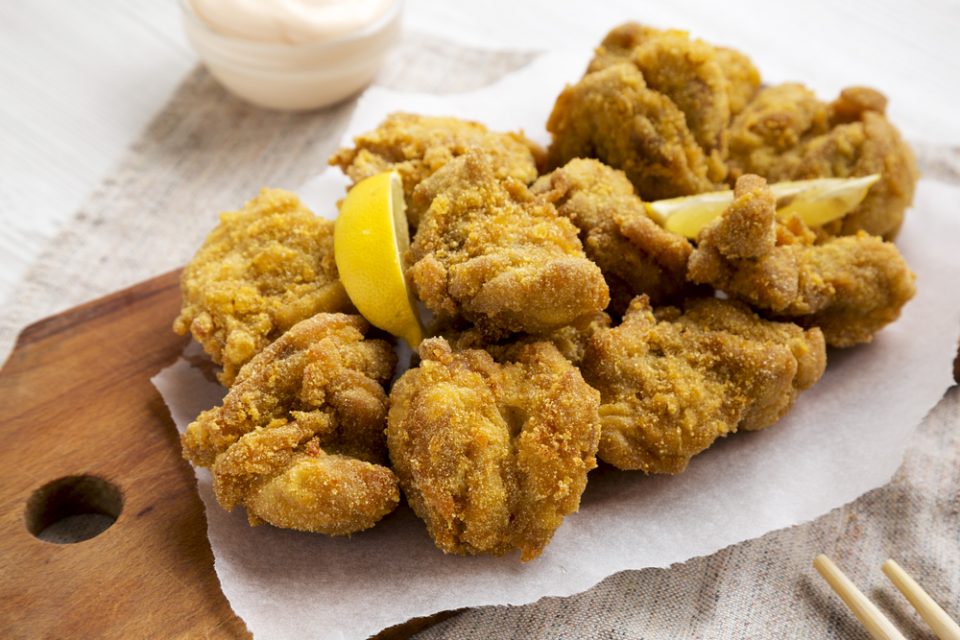
Karaage is a uniquely Japanese form of fried chicken. You can find it served in izakaya, as well as in more substantial meals like rice bowls and curries, but karaage is also one of the more popular Japanese snacks found in convenience stores across Japan.
When you visit a Japanese konbini, you’ll see a hot food counter next to the cash register, and in there you will often see skewers of karaage fried chicken being kept warm and ready to eat. Karaage are always in a small ball shape, making them convenient to eat in a single bite and perfect for putting on a skewer.
What makes karaage stand out amongst other kinds of fried chicken is how light it is. Karaage is dusted and soft and fluffy; it doesn’t feel or taste heavy, greasy, or dense. It has a flavour like nothing else and is very affordable if bought as a single Japanese snack over the counter at a convenience store.
Famichiki
While we’re on the subject of Japanese fried chicken, one of the most infamous examples is Famichiki. This is like the Pocky of fried foods — Famichiki is a chunk of fried chicken exclusive to the Family Mart chain of Japanese convenience stores. It’s a popular snack, also found in the hot food counters.
Famichiki is not karaage. It has a hard and crunchy, heavily fried outer shell and tender, soft chicken meat inside. There are also two types of Famichiki: normal and spicy. The spicy isn’t actually all that spicy; more tangy in flavour, but both are great options to try.
You’re not going to find famichiki outside of Family Mart but, if you’re near one, pop in and pick one up to try!
Jagariko Potato Sticks
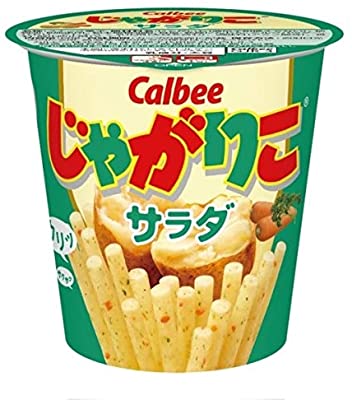
Whether you call them potato chips or crisps, the world loves heavily processed,salty, fried potato snacks that come in a variety of strange flavours.
The UK is famous for its weird selection of flavours like prawn cocktail, pickled onion, and worcestershire sauce (winner).
In Korea, sweet flavoured crisps (Honey Butter Chips) are strange, excessively popular, and surprisingly delicious. In Japan, the most popular crisps don’t look like crisps at all (but they are).
Jagariko Potato Sticks come in a pot and, at a glance, could very easily be mistaken for cup noodles.
The standard flavour of Jagariko Potato Sticks is simply known as “salad” but there are several other flavours to be found, including “cheese” and “potato butter”. A pot of Jagariko Potato Sticks is a simple and light snack in pretty packaging (a staple of Japanese snacks).
Read More: 13 Best Japanese Cookbooks
Hi-Chew
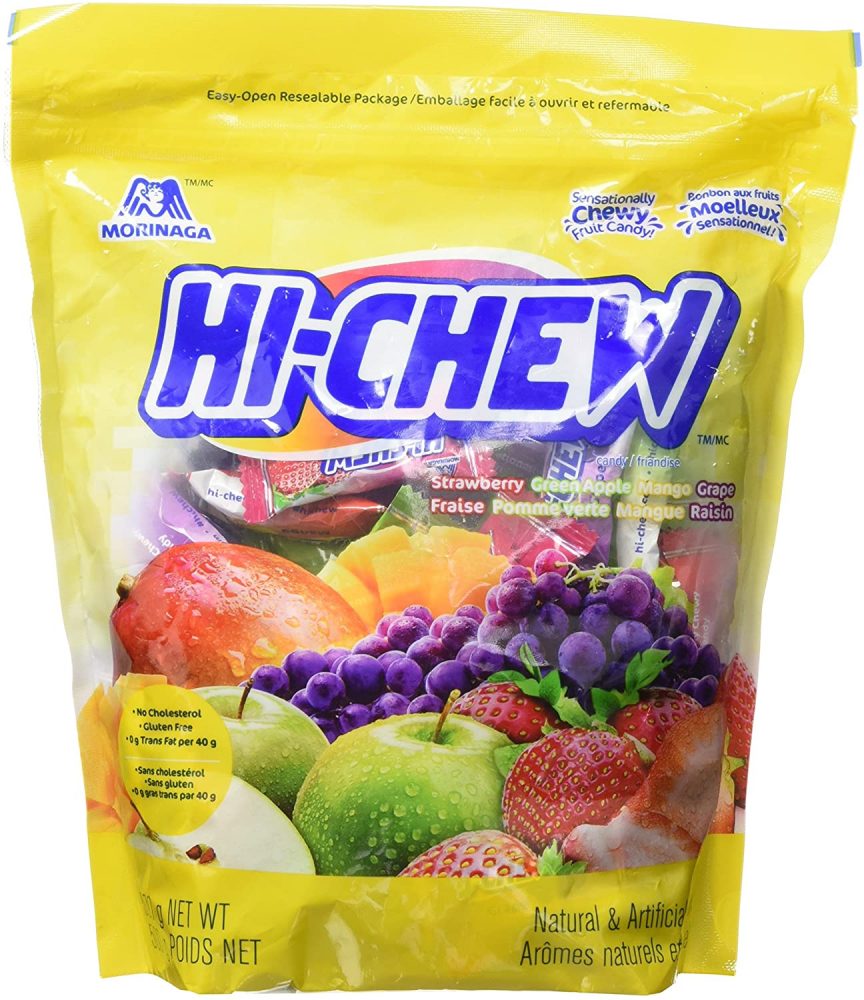
Hi-Chew is another Japanese version of a fruity chewy snack found all around the world. But, just like with almost everything else, Japan does it best.
As a 90s kid in the UK, Chewits were everywhere, and in Japan Hi-Chew are still an ordinary sweet snack that come in a variety of fruity flavours.
Strawberry, green apple, grape, mango, and kiwi are all available flavours of Hi-Chew that come in long packets of individually-wrapped chewy sweets. You can also get them in a bigger grab bag of mixed flavours.
The reason we say that Japan does simple snacks like this better is because sweet things in Japan never feel overdone or overindulgent. Flavours are stronger but sweetness is never overpowering.
The sugar content won’t make your teeth hurt, but the distinct flavours are still crystal clear.
Read More: 10 Must-Try Traditional Japanese Food in Tokyo
Kinoko no Yama

These are your bog-standard Japanese snacks for kids. Kinoko no Yama (meaning “mountain of mushrooms”) is a bag of chocolate-coated biscuits similar to Animal Crackers in the West. Though, admittedly Kinoko no Yama are a little more phallic in their appearance.
Similar in many ways to Alfort Mini Chocolates, Kinoko no Yama come in a box and, when opened, can be poured out into the cupped hands of a happy child for them to nibble at one-by-one or devour like they’re Godzilla and the snacks are little people.
Kinoko no Yama says so much about how Japanese snacks are made, designed, and marketed: they’re silly, simple, harmless, kind of cute, and popular with everyone.
You can’t help but wonder what the minds behind these particular Japanese snacks were thinking but they are nevertheless a lovely little sweet snack.
Kokuto Black Sugar Walnuts
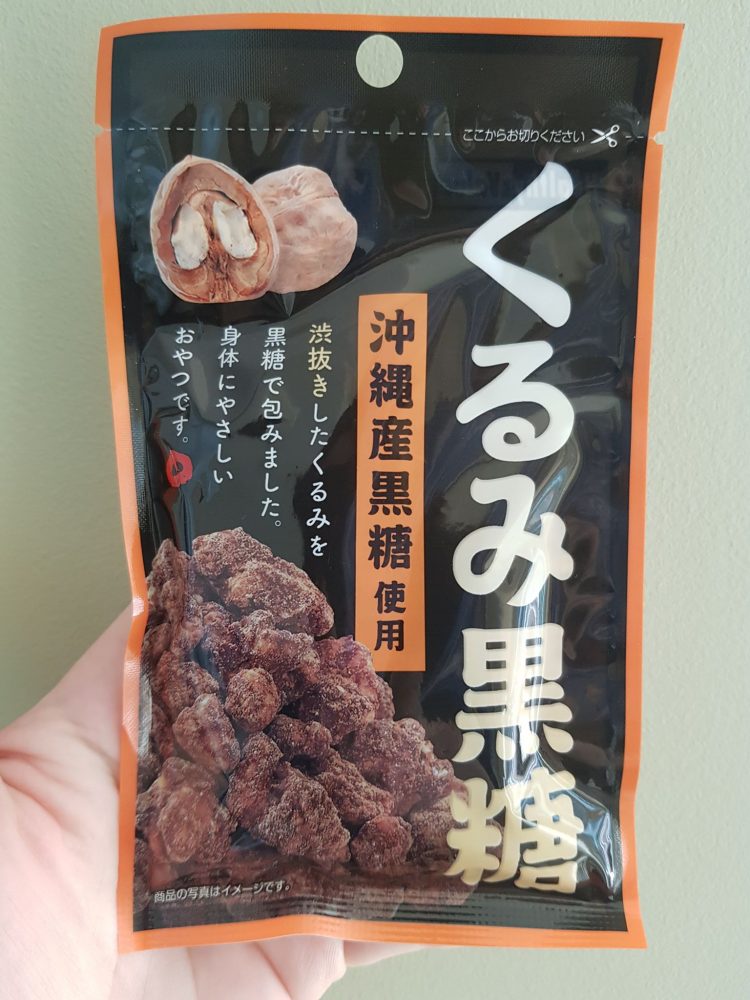
Kokuto is a kind of black sugar popularly used in Okinawan cooking, and that’s exactly where these unique Japanese snacks come from. Kokuto Black Sugar Walnuts are an Okinawan delicacy, and they are exactly what their name suggests: locally grown walnuts from Okinawa, coated in black sugar which is come from local sugarcane.
Like wasabi peas, this is a snack which combines various natural ingredients to produce something wholly and delightfully tasty.
You can get these black sugar walnuts directly from Okinawa and they are, honestly, one of the best Japanese snacks on this entire list.
Kaju Gummy Sweets
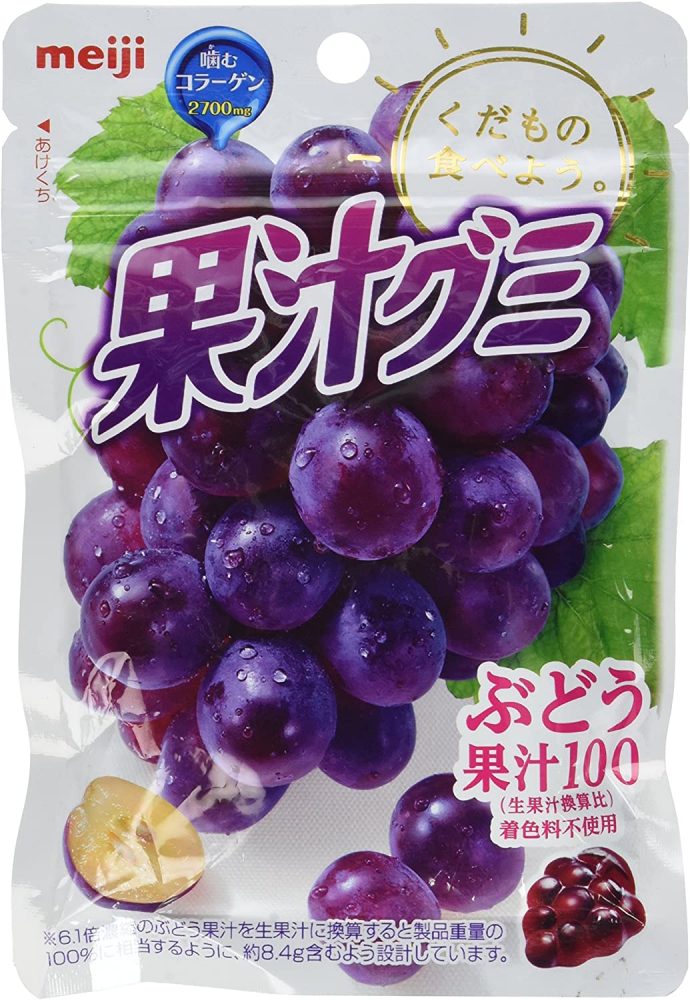
Gummy sweets are not for everyone. Some people hate how they’re made, others don’t like the texture or the overwhelming sweetness. But, once again, Japan does it right. Kaju Gummy Sweets are the ultimate final form of gummy sweets.
Available in a variety of fruity flavours, including orange, strawberry, grape, and pineapple, Kaju Gummy Sweets are soft, chewy, not overly sweet, and packed with fruity flavour.
It’s this intense flavour bundle with the lack of sugary processed sweetness that makes them such a soothing, pleasant Japanese snack food, especially for those of us with a real sweet tooth.
Read More: 27 Best British Snacks to Try and Where to Find Them
Mochi

Mochi is a beloved sweet snack in Japan, traditionally eaten at festivals and, especially, at New Year’s. Do yourself a favour and find a video on YouTube of mochi being prepared; it’s incredible.
There are mochi-making contests in Japan and they are hypnotic to watch.
Mochi is made by taking rice, water, sugar, and cornstarch and mashing it all together into a sweet, chewy pulp. Mochi makers slap and hammer away at the dough-like substance for minutes at a time with big wooden mallets.
The end result is a very chewy and uniquely textured substance. A kid of cake often filled with something gooey: red bean, matcha, and chocolate are popular options.
Kabukiage Rice Crackers
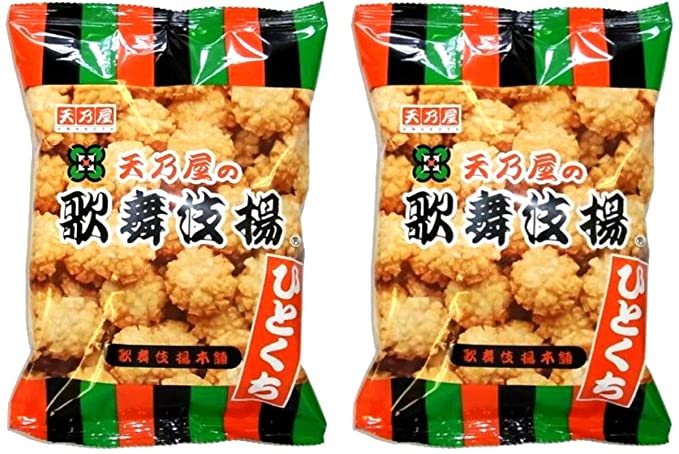
Rice crackers are another Japanese snack that’s popular the world over. Brands in Korea, Taiwan, and China also sell rice crackers, and you can even buy them in European supermarkets as a lighter, healthier substitute for fatty crisps/potato chips.
Kabukiage Rice Crackers are the most popular and, probably, best of the bunch. They come in clear packets of bite-sized snacks and are delightfully indulgent, even given how healthy they are compared to various other Japanese snacks
Read More: A Guide to Japanese Onigiri Rice Balls
Seaweed Tempura

Tempura is a popular Japanese food not only around the country but the entire world. Inspired (as many Japanese foods have been) by Portuguese cuisine, tempura are simply fresh vegetables deep fried in batter and then enjoyed with a dipping sauce.
And, since you can fry anything, why not seaweed? And then turn it into a snack?
Seaweed Tempura isn’t a specific brand; rather, it is a style of food sold by several different brands in Japan. But all of it is the same in principle: a bag of salty crisps/potato chips, except instead of them being potato-based, they’re fried, salty, crunchy seaweed.
And they are absolutely delicious. In Japan, seaweed (nori) is used in tandem with rice constantly, from sushi to onigiri. Nori, by itself, is delicious, so why not turn it into a fantastic little snack!
Where to Buy Japanese Snacks
All of the Japanese snacks mentioned so far, plus many, many others, can be found and purchased in a variety of ways, both at stores and online. Let’s go through a variety of ways in which you can get your hands on all of these fantastic Japanese snacks, no matter where you are in the world.
Japanese Snacks Online
Shopping online is your most obvious avenue, especially if you’re not in Japan yourself. Literally anything can be purchased over the internet, afterall.
More specifically, there are several specific websites through which you can buy and import Japanese snacks online. The first, simplest, and most fun is via a Japan snack crate.
A Japan snack crate is a monthly subscription box (many of which we are already big fans and subscribers of) which sends a bundle of Japanese snacks right to your door. The biggest and best Japan snack crate is easily Bokksu.
Shipped from Osaka, Japan with free worldwide shipping, Bokksu provides a different selection of Japanese snacks every single month, gathered from around Japan and bundled together for your enjoyment.
Each month’s box is themed around a different part of Japan – with each area having its own local snacks – or a matsuri (festival) where certain snacks are traditionally enjoyed.
If you’d rather not subscribe to a Japan snack crate, you can cherry pick exactly what Japanese snacks you want on websites like Blippo Kawaii Shop and Japan Candy Store. Both of these websites ship worldwide and offer a huge selection of Japanese snacks.
While both of these sites primarily focus on the sweet tooth (most of their snacks are candy, cookies, and chocolates) they both also organise their snacks by unusual categories.
If you’re looking for a specific themed candy (like Hello Kitty cookies or Super Mario Chocolate), you can specify that on these sites.
Japanese Snack Stores
This option is not so universal but, depending on where in the world you live, can work out a lot cheaper than buying Japanese snacks online.
Import stores can be found in almost every major city in the world – we even found a Japanese and Korean snack store in Bucharest, Romania. Just use Google maps to find your local Japanese snack stores.
If you like your Japanese snacks to be baked (like melon pan), search online for your nearest Japanese bakery. Covent Garden in central London, for example, has two different Japanese bakeries on the same street.
These bakeries offer Japanese sweet breads, mochi, cookies, pastries, and plenty more for you to enjoy fresh.
Snacks In Japan
If you happen to be based in Japan, almost every single snack mentioned here can be bought at your local konbini (convenience store). 7-Eleven, Lawson, and Family Mart all sell melon pan, Alfort Mini Chocolate, Pocky, Jagariko Sticks, and plenty more.
Never underestimate the power of the Japanese convenience store. And, if you can’t find what you’re looking for, visit your local supermarket or try online; shipping within Japan is far cheaper than international shipping, afterall.

